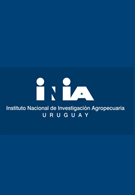ABSTRACT. The incidence of short oestrous cycles and kidding rate in dairy goats were evaluated after administering a low dose (500 IU) of equine chorionic gonadotrophin (eCG) during two breeding seasons. The first year, 46 does (Saanen, n = 10; Nubian, n = 26; and their local crossbred, n = 10) were used. The second year of the study was performed on 34 of the same does (Saanen, n = 4; Nubian, n = 19; local crossbred, n = 11). The goats were synchronised with intravaginal sponges that contained medroxyprogesterone acetate during a period of 14 days. At the time of sponge withdrawal the animals were assigned to two groups:the eCG group was injected with 500 IU of eCG i.m. and the control group was injected with 2 ml of saline solution. Oestrous detection began 12 h after sponge removal. Once a doe was detected to be on heat, it was mated twice:at the moment of detected heat and 12 h later. The animals which presented short cycles were mated again according to the same schedule. To determine the progesterone concentration, all of the animals were bled on the day of standing heat and every second day over a period of 22 days during the second year. All of the does exhibited oestrus within 4 days after sponge removal. The average time (mean ± SD) between sponge withdrawal and standing heat was significantly shorter in the eCG group than in the control group (34.5 h ± 11.9 versus 42.9 h ± 19.6). More animals in the eCG group returned to oestrus than those in the control group (62.5% versus 15%; p

